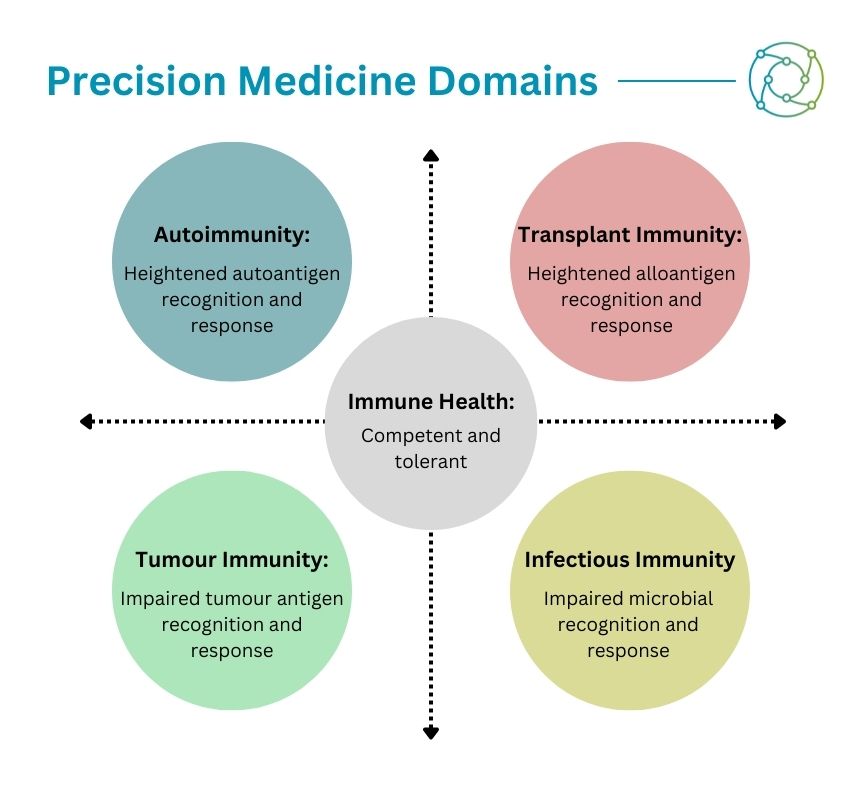Antibody-Mediated Rejection and Next-Gen Sequencing in Precision Medicine

Our September 2022 Discussion Group on Next-Gen Sequencing in Precision Medicine brought together key industry figures to discuss the prevailing trends in precision healthcare. The discussion was led by Paul Anthony Keown, Professor at the University of British Columbia, who provided compelling insights from his extensive experience working within the field of precision healthcare.
“Over the last six to seven years, Canada has invested very heavily in the field of precision medicine and the underpinning world of genomics — probably half a billion dollars in total,” said Keown as he gave an overview of his current aims in research. “In terms of the cost of targeted sequencing, we’re down to $150 for gene sequencing which we can perform in a period of about four to five hours.” Keown broke the approach taken by Canada to complex diseases into four different areas. “The first is structural biology, followed by immune biology and molecular diagnostics, then translating that to personalised immunotherapy, and lastly taking that forward to the Canadian Government to inform policy using evidence-based health technology assessment.”
Contributing to the discussion were Jason Kim, Professor and Director at University of Massachusetts Chan Medical School, Bret Yarczower, Senior Medical Director at Geisinger, and Min Ni, Associate Director at Regeneron. A central focus of the discussion was on antibody-mediated rejection and the potential solutions which may feature in the clinic in years to come.
Graft Rejection: Patient Success and Limitations
A major focus for Keown in his research has been improving patient success rates with a well-functioning graft. “We have 95% success over the first year, but success then declines and after ten years only 40% of patients are still alive with a well-functioning graft. Our goal is to change that and alter the trajectory of failure.” One of the biggest obstacles to graft success rate in patients is graft versus host disease (GvHD), a complication of allogeneic stem cell transplantations which occurs when the donor’s T cells view the patient’s healthy cells as foreign and attack them.
“Our goal is to perfect the methods to allow the induction of immune tolerance, so that we can discontinue all immune suppressive treatment and avoid long-term toxicity and transplant failure,” said Keown. In this way, Keown hopes to overcome complications arising from antibody-mediated rejection such as GvHD.

To circumvent complications arising from GvHD, patients receiving allogeneic stem cell transplants may be given medication to suppress T cells in the graft. However, the suppression of a patient’s immune system in this way can result in long-term downregulation of their genome, even following graft success, a removal of treatment, and a return to normal life. “When we are facing the challenge with the donor, we have a very limited window of time,” Keown added. “Organs can only be kept ex vivo for a few hours at most.”
Inflammation and Immune Response
Jason Kim offered his thoughts and experiences on inflammatory events in tissue, explaining that in the context of immune cells, inflammatory events become a question of immune stress. He gave the example of liver diseases such as cirrhosis: “We think that these inflammatory events are not necessarily responding to any kind of pathological event, but are responding more to the signal coming from inside the cell.”
“Our angle of interest is in the role of inflammation in obesity and diabetes,” Kim continued. “When you’re obese, you have this chronic low-grade inflammation — we found that this inflammation is not just in the adipose tissue, but is also localised in muscle, liver, heart, and beta cells.” Kim added that this explained why Covid-19 patients fared worse when they had an underlying condition of diabetes and obesity.
Keown explained his own laboratory’s interest in the structural biology of the immune system, which was particularly focused on HLA (human leukocyte antigens) genes and their translation to HLA proteins on the cell surface. “They have two main functions,” said Keown. “One is in peptide presentation for immune recognition, and the other is in the field of transplantation. They are the main proteins that are recognised in the foreign tissue.” He added that when his team were matching for transplantation, they had plenty of time to match to the recipient because they should be known well in advance, avoiding complications that may arise from antibody-mediated rejection.
Precision Medicine in Transplantation
After touching on the role of inflammatory events in the context of the immune system, the conversation shifted to precision medicine in transplantation and immune diseases. As Keown explained, the University of British Columbia has been focusing on matching donors and recipients for both solid organ transplantation and stem cell transplantation. In particular, the focus was on epitopes over alleles, which are present in much smaller quantities. “The only thing we’ve been waiting for is a rapid tool to give us sequence-level information on the donor, and we think we have that now in terms of the nanopore sequencing,” said Keown.
“Over the last couple of years we’ve been looking at long-range nanopore sequencing,” continued Keown. “This offers wonderful opportunities in every way — it’s fast, it’s precise, it’s cheap. It is, I think, a wonderful advance in technology.” Through the rapid, accurate sequencing of donor genomes, crucial genetic information can be analysed to assess the likelihood of compilations associated with antibody-mediated rejection.
“The other thing when you talk about transplants is there are fairly good objective outcomes that one can look at, and you don’t have to wait a lifetime to see them,” said Bret Yarczower. “If you’re looking at solid organ transplants, can we reduce complications and better utilise anti-rejection meds to preserve the function of the organ and increase its lifetime?” Keown replied that this was the case. “Our aim is patient success with a well-functioning graft,” he said. “Even better, patient success with a well-functioning graft.”
Working Towards Organ Graft Success
Keown gave an overview of his sequencing approach identifying the epitopes focused on for removing graft detection from the immune response. “We’ve identified a sequence with 150 epitopes which is the one we’re hoping to pursue because it’s simple and easy to match.” Keown identified a small number of epitomes which are key to triggering the immune response. “There’s a whole bundle of them that never trigger antibodies, so we may only have to match a small number of epitopes,” he explained. “If we do that, we can make the graft unseen to the immune response — like Harry Potter’s cloak of invisibility.”
“When you study this, are you looking at matched cohorts?”, asked Yarczower. “As closely as possible,” said Keown. “We try to draw matched samples for comparison, and we look at the genomic basis. One of the things we’re trying to do is to look at people longitudinally with a depleted immune response because they’ve got chronic organ failure — they’ve been sick for a long time.”
“Long-range nanopore offers wonderful opportunities in every way... it’s fast, it’s precise, it’s cheap. It is, I think, a wonderful advance in technology.”
Keown explained that although a patient with a depleted immune response could receive a graft and return to essentially normal health, their genome would not be ‘normal’. “60 to 70% of their genome is profoundly downregulated,” he said. “We think this is because we gave them a very large amount of immunosuppression, to stop the graft rejecting. We’ve followed this latitudinally because for us a significant end goal is tolerance, and we think this is the prelude to tolerance.”
Future Aspirations for Precision Medicine and Solutions for Antibody-Mediated Rejection
Keown rounded off by touching on the next big multi-university platform he will be involved in, overseeing the field of tolerance. “We’ll be combining mini bone marrow transplantation with solid organ transplantation to achieve mixed chimerism — a little bit of donor, a little bit of recipient — so we can maintain tolerance to the graft.” He added that this involved looking at autologous expanded regulatory cells, such as B regulatory cells and T regulatory cells. “The sequence would be that you get your graft today, and in the next ten days you receive highly selected stem cells from the donor to damp the immune response.” From here, researchers can access an expanded packet of self-regulatory T, B, or NK (Natural Killer) cells that attain long-term quiescence.
- Quality Control for Quality Data in Image Modelling and Spatial Analysis
- Computational Methods for the Integration of Spatial Metabolomics
- Long and Short Read Sequencing: Revolutions in Genomics Data
To close the hour’s discussion, Keown acknowledged the difficulties of negotiating difficulties such as GvHD and antibody-mediated rejection and emphasised how the field of precision medicine had advanced during his career. “When I started working in transplantation, we lost 80% of the grafts and 50% of the patients within the first three months. It was a nightmare. So if I can see a little tolerance before I finish, I’ll be a very happy person.” Keown thanked the participants for their contributions and rounded off on an optimistic note. “Gene editing is such an exciting area – in many ways I almost wish I was starting again.”
Want to read more about upcoming news and research in the field of precision medicine? Sign up to our Omics newsletter to receive monthly updates about the latest industry insights, or head over to our Omics portal. If you'd like to register your interest in our upcoming NextGen Omics UK: In-Person conference, visit our event website.







